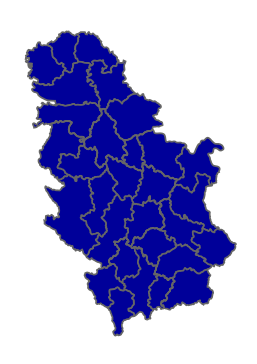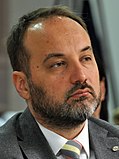Serbian presidential election, 2017
|
|
|||||||||||||||||
|---|---|---|---|---|---|---|---|---|---|---|---|---|---|---|---|---|---|
|
|||||||||||||||||
|
|||||||||||||||||

Election results by district
Aleksandar Vučić
|
|||||||||||||||||
|
|||||||||||||||||
Presidential elections were held in Serbia on 2 April 2017, the eleventh since the office of President was introduced in 1990. Incumbent President Tomislav Nikolić was eligible to run for a second five year term, but opted not to do so. Prime Minister Aleksandar Vučić was elected as President in the first round.
The President of Serbia is elected for a five-year term using the two-round system.
Serbia's Electoral Commission confirmed eleven candidates. Candidate numbers were decided using a random draw on 17 March.
On 15 February 2017, news outlets announced that Tomislav Nikolić had decided to run for president, despite not being nominated by the SNS. However, five days later he publicly stated that he would not run for re-election. Likewise, Dušan Janjić from Active Serbia had announced his candidacy in May 2016, only to prematurely end his campaign on March 11, 2017. On March 12, 2017, independent candidate Vladimir Rajčić announced that he terminated his presidential campaign, but that he will be active in future elections. In March 2017 independent candidates Danijela Sremac, Saša Mirković and Andrej Fajgelj decided to end their campaigns.
On 3 April 2017, the Republican Electoral Commission announced that the election results from two polling stations in Bačka Palanka and Zrenjanin would be annulled and followed by a repeat vote at those stations on 11 April. This was due to reports of electoral fraud. The following day, the election results were anulled in a further six municipalities, with re-runs also scheduled for 11 April. The repeat vote in the eight municipalities will not change the outcome of the elections, as there are only 9,851 voters who are eligible to vote, fewer than Vučić's margin of victory.
...
Wikipedia


